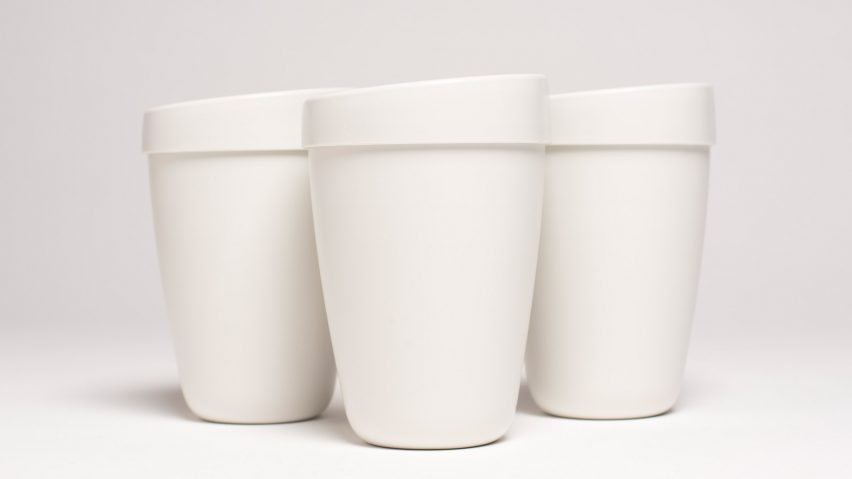
"It makes you a bad designer if you make something that can't be recycled" says Cupclub founder
Architect Safia Qureshi wanted to change the world but ended up designing private houses for rich people. So she invented Cupclub, a circular-economy service that could eliminate single-use coffee cups. As it launches in London, she spoke to Dezeen about the project.
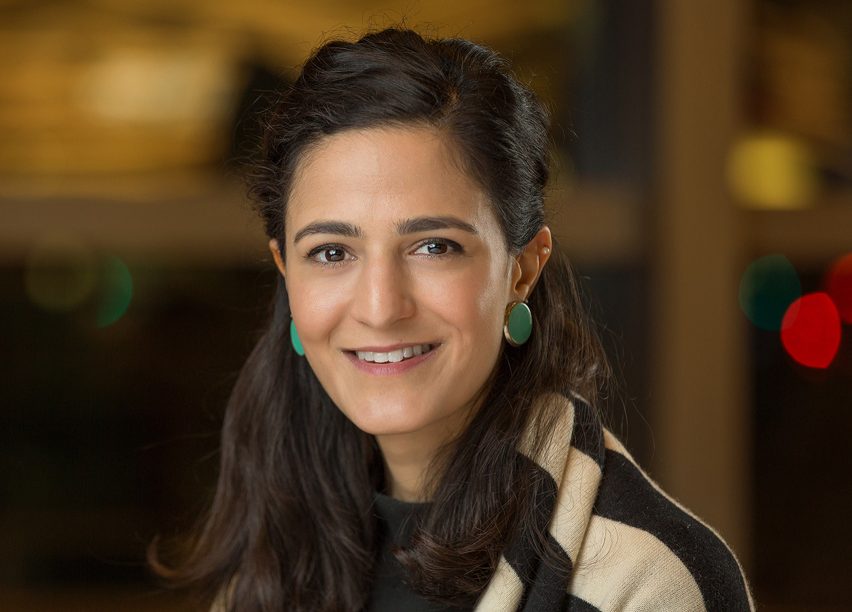
"Most packaging you see isn’t really designed," said Qureshi, founder and CEO of Cupclub. "It’s just there. No-one’s really thinking about end-of-life."
Cupclub's cups are instead designed to be reused 132 times and then recycled. "It had to be ubiquitous," said Qureshi of the cup, which is made of recyclable polypropylene and comes with a low-density polyethylene lid.
"It's kind of like a Boris Bike"
"The design brief was to design products that people will like and return rather than products they will love and take home and keep," said the London-based architect, who is co-founder of social and environmental design studio Studio [D] Tale.
"It’s kind of like a Boris Bike – they’re ugly, clunky and difficult to ride but they do the job. You’re never going to steal a Boris Bike."
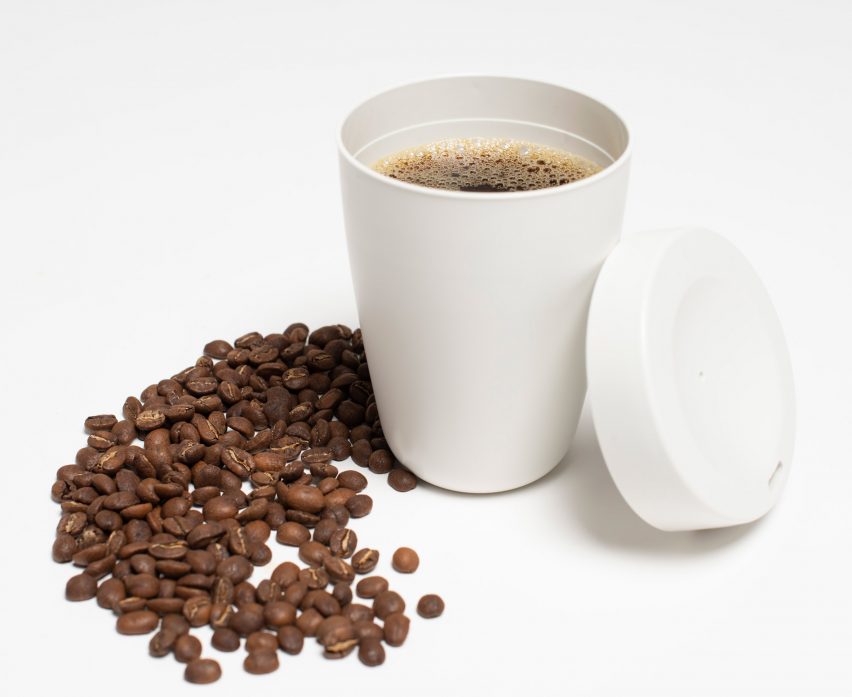
Describing itself as a "cups-as-a-service startup", Cupclub supplies re-usable plastic cups to cafes and coffee bars. After finishing their drink, customers take the cups to collection points from where they are taken to a washing centre before being redistributed back to outlets.
"You just drink and drop," said Qureshi. "Our orders are directly with the retailer; consumers don’t pay any extra."
100 billion cups discarded each year
The service claims to reduce single-use plastic packaging by 40 per cent, and hopes to help reduce the estimated 100 billion single-use coffee cups that are discarded each year.
The idea was a winner of the Circular Design Challenge award at New Plastics Economy, and initiative promoting the circular economy led by environmental charity the Ellen MacArthur Foundation.
"It makes you a bad designer if you make something that can’t be recycled; if you have no idea of what’s going to happen to your product after it’s been used," said Qureshi. "You’re not completing the picture or showing responsibility. Why are you doing what you’re doing?"
Launched in London yesterday, the service aims to supply cups for six million drinks in its first year. Here's an edited transcript of the interview with Qureshi:
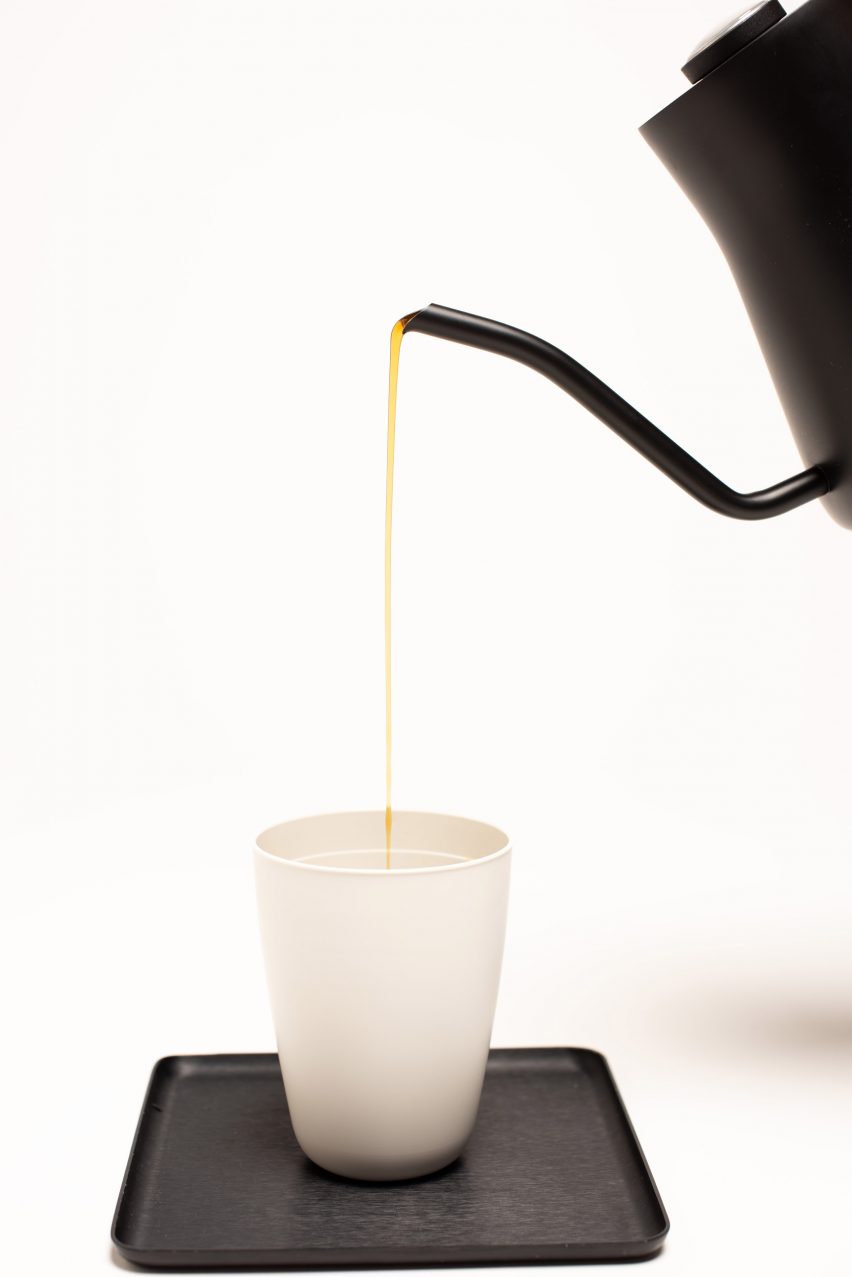
Marcus Fairs: How did you go from being an architect to a socially responsible entrepreneur?
Safia Qureshi: From a very early stage my vision was always to develop products and services that everyone could use and enjoy. When I was young I thought I could do that through architecture but I found that most architecture projects were very private. I couldn’t take friends and family to see what I’d worked on. Most of it was private residential.
I got disillusioned by that so I decided to set up Studio [D] Tale, an agency to develop products and services that could be used by anybody. We started building our own briefs and instead of going out and trying to find work we were actually building projects that we could sustain and build independently.
Marcus Fairs: How did Cupclub come about?
Safia Qureshi: Cupclub was one of the first ideas we had in the agency. It started out as a research project; we weren’t taking it too seriously in the early stages. It came from an observation: I was on a train to work and I saw three guys holding identical coffee cups. They got off at Waterloo and went to find the nearest bin.
I thought that was really interesting as they’d all started and ended their journey at the same place. I thought I could put a different product in their hands to create a community or tribe, and instead of the bin I could put in something I could service. I thought if I could build a product and service with a very strong brand around it, where people would feel part of a tribe through using a product.
So Cupclub started like that: with me drawing all of this into my notebook that morning.
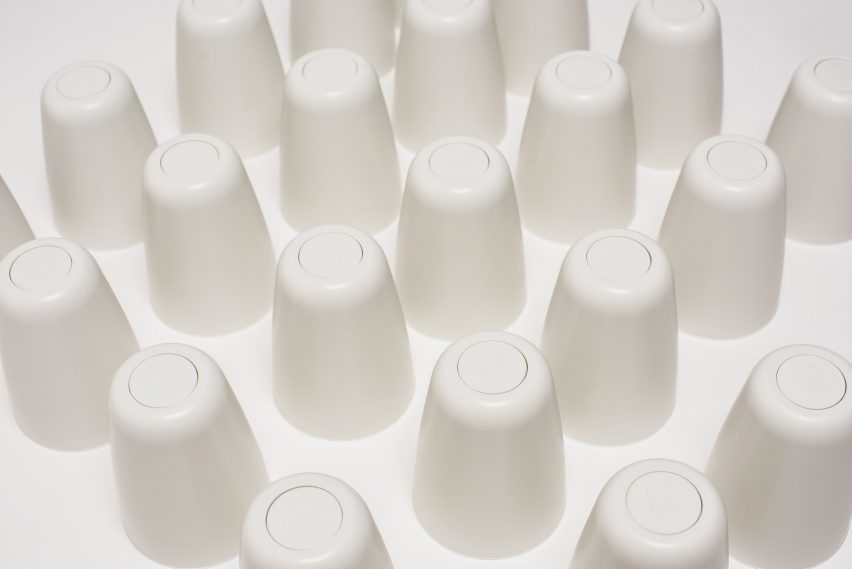
Marcus Fairs: How did you go about making the idea happen?
Safia Qureshi: Two days later I happened to be at a creative networking event where the head of the Greater London Authority’s environmental team stood up to ask for solutions to tackle waste and air quality. So I explained idea to him. This was in July 2015; he asked me to pitch the idea in his office in September.
So I built a team. I was obsessed with the Ellen MacArthur Foundation’s entire transformative circular economy mission and her as a leader in this space, so I brought someone from the foundation on board, plus an architect, and we put together a presentation.
Our product had to feel ubiquitous without being unloved
We also exhibited as part of London Design Festival in 2015 to see if people liked the idea. At the time the GLA’s focus was not so much about reducing single-use packaging; it was more around how to reduce nitrous oxide in the air. It was not high on their agenda. But they liked the idea. We had to wait for the industry to be ready.
A few month later Hugh Fearnley-Whittingstall's BBC TV series War on Waste came out, so consumers knew about the problem of single-use drinks cups.
So we trialled Cupclub at the Royal College of Art with Monmouth Coffee. We signed up 61 per cent of the college population. Within six weeks we took over 47 per cent of all sales, which is a huge amount. So we realised it could take off.
Then we set about building partnerships with much bigger players. Arena Group are our logistics and washing partners. R/GA have helped with communications and brand building. And today we're launching Cupclub with Cushman & Wakefield, which the second-largest commercial real-estate business globally. We’re starting with their HQ in London; they will then take Cupclub to their clients and customers.
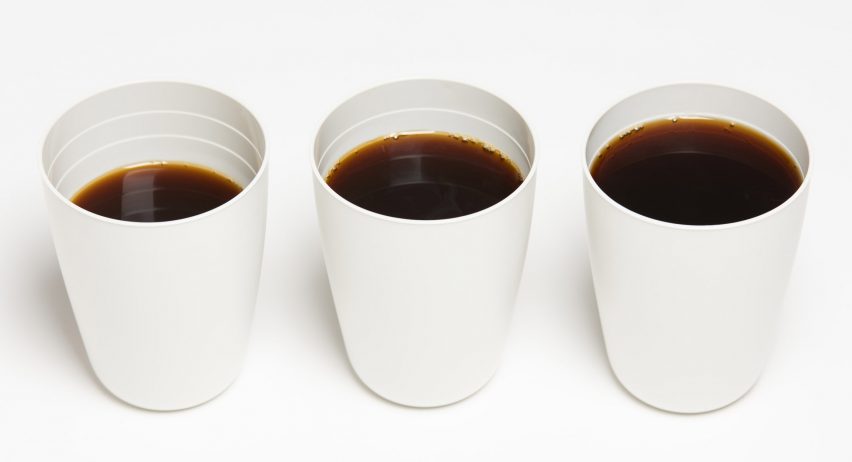
Marcus Fairs: How does Cupclub work?
Safia Qureshi: You just drink and drop. You go to your favourite coffee shop – at the moment that will be in offices and university campuses. You order your coffee with the Cupclub product. The barista will remind you to put the cup in one of the collection points when you’re done, and that’s it. Our orders are directly with the retailer; consumers don’t pay any extra.
Marcus Fairs: Tell me about the design of the cup.
Safia Qureshi: It had to be ubiquitous. The design brief was to design products that people will like and return rather than products they will love and take home and keep. It’s kind of like a Boris Bike – they’re ugly, clunky and difficult to ride but they do the job. You’re never going to steal a Boris Bike.
In the same way we wanted a product that was convenient, ubiquitous and which didn’t challenge other brands, because we want to work with brands in the drinks space and power their packaging.
So our product had to feel ubiquitous and universal without being unloved; carefully thought through but not overdesigned. Like how Amazon do their whole platform: there’s nothing beautiful about it but it doesn’t everything really well. It’s just boiling the product down and not overdoing it.
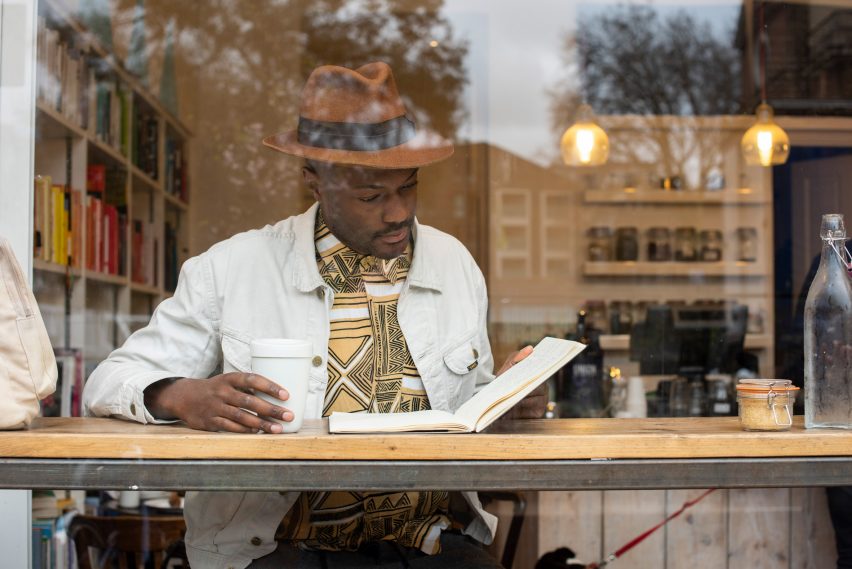
Marcus Fairs: What is the cup made of?
Safia Qureshi: We made a conscious decision to make everything from mono-materials that can be recycled everywhere globally. The cups are made from polypropylene [PP] and the lids are made from low-density polyethylene [LDPE]. They’re universal materials that can be recycled by anyone. That is really important because there is no infrastructure currently to recycle bamboo. There is no wide infrastructure to recycle bioplastics – they will just get incinerated. So it’s about taking a journey with industry.
Marcus Fairs: What are your ambitions in terms of scale?
Safia Qureshi: We’re starting in London. In year one, our capacity is six million. That’s six million drinks, not cups. Each cup can be reused 132 times. They are constantly going around our system.
Marcus Fairs: How do you track the cups?
Safia Qureshi: There’s an RFID chip built into every cup so we know where every cup is. We can tell brands where their cups are. So we can ensure they don’t become roadkill or get abandoned in the environment. It’s smart packaging.
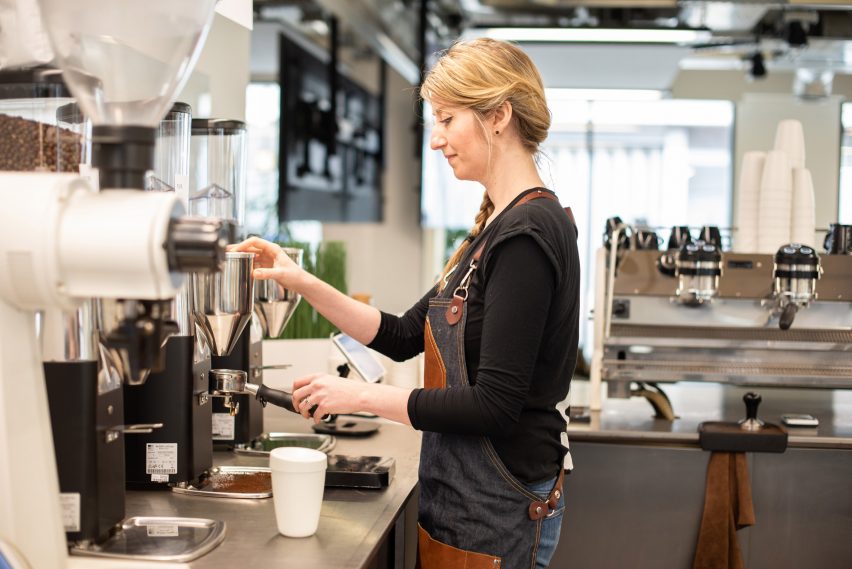
Marcus Fairs: Do you believe that design can really improve the world and change behaviours?
Safia Qureshi: One hundred per cent. It starts with design because ultimately it’s not the consumer that is going to make a decision: it’s brands. So it’s our responsibility to ensure that products have an end-of-life value or function. So we’re not closing our brief at the point of use. We have to understand what will happen after. That needs to be wound back into the process of design. We need to think about the materials and the afterlife.
"There is no infrastructure to recycle bamboo or bioplastics"
For example we wanted to put an insulating silicon band on our cups but we got rid of it because it couldn’t be recycled. It makes you a bad designer if you make something that can’t be recycled; if you have no idea of what’s going to happen to your product after it’s been used. You’re not completing the picture or showing responsibility. Why are you doing what you’re doing?
Most packaging you see isn’t really designed. It’s just there. No-one’s really thinking about end-of-life. You just don’t get very sophisticated designers looking at everyday products. There’s loads out there for designers and architects to do, instead of getting really excited about chairs. We don’t need more of those. Where is the design thought? The stuff we interact with everyday is all being done by very standard design teams. As designers we obsess over certain categories instead of looking at the whole encompassing world that has been created for us.